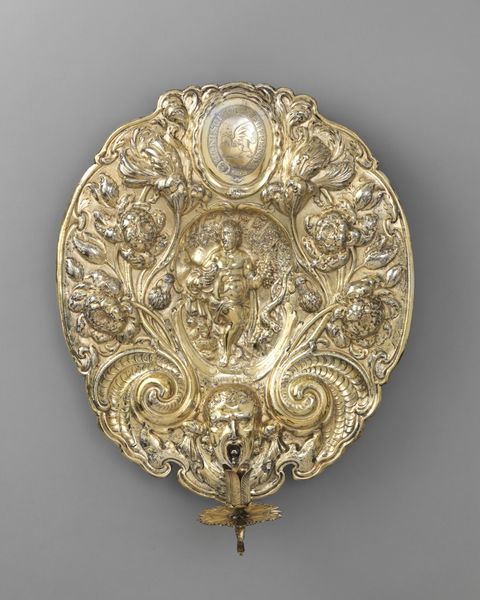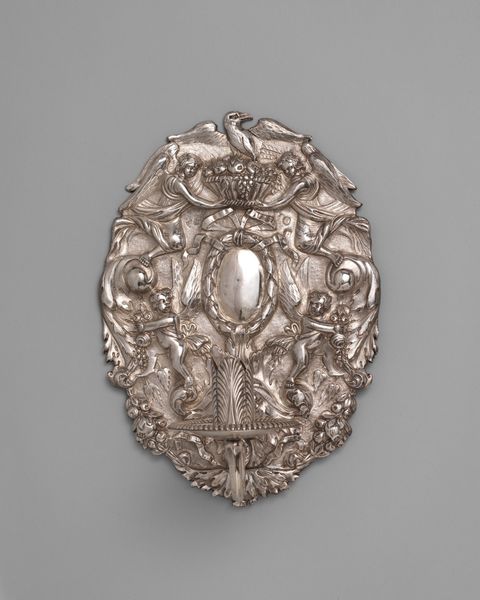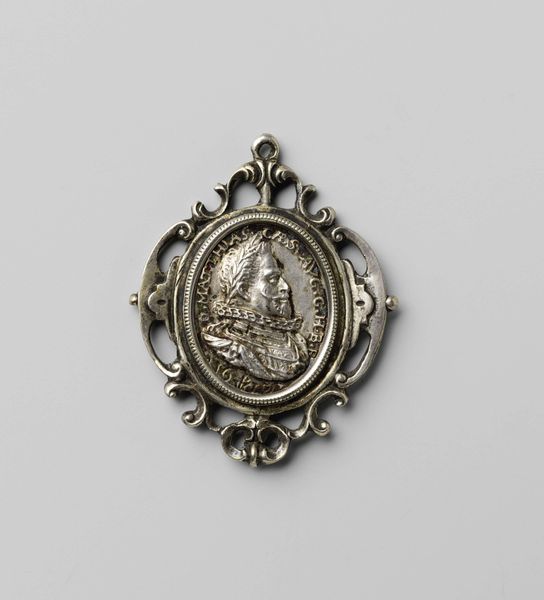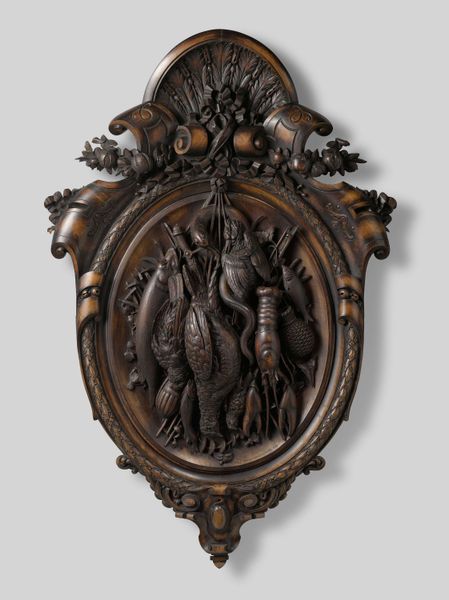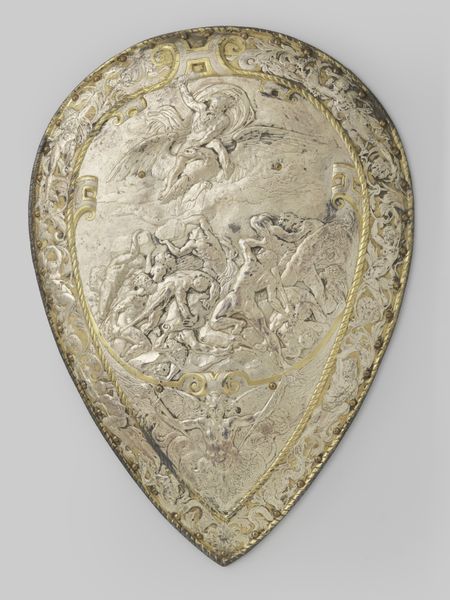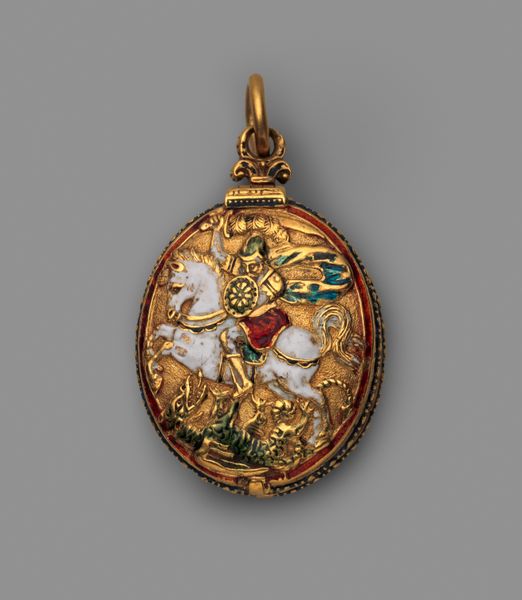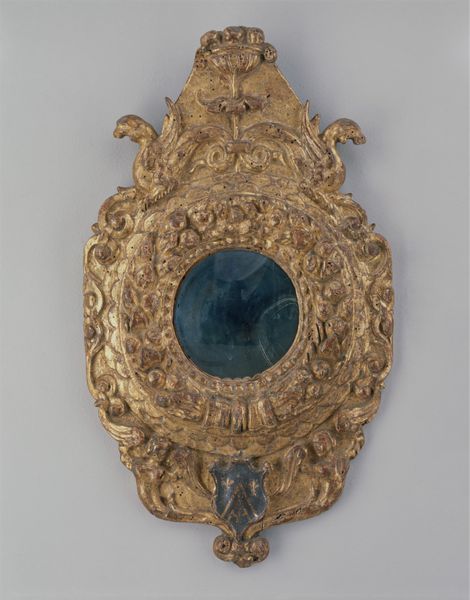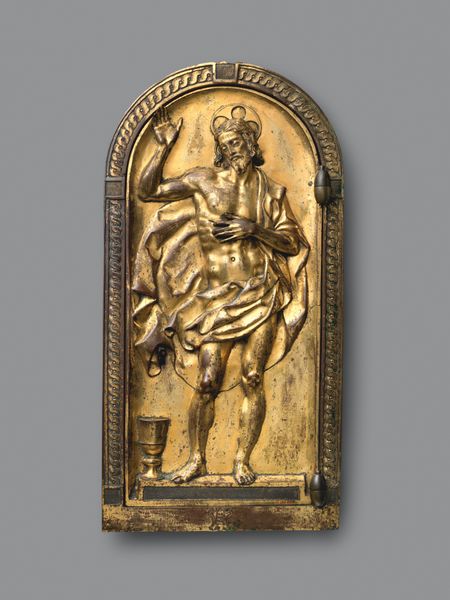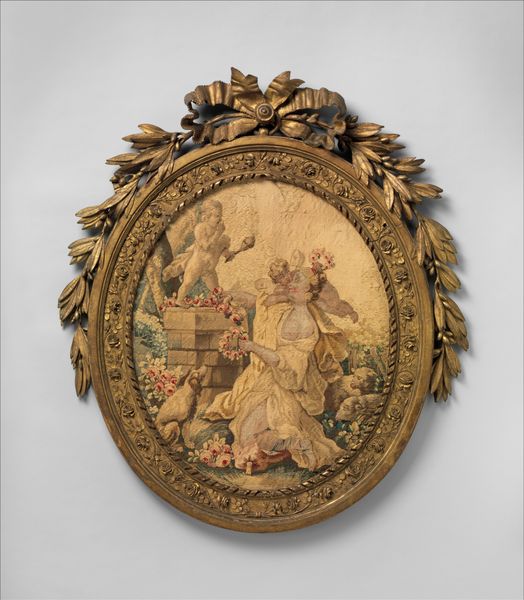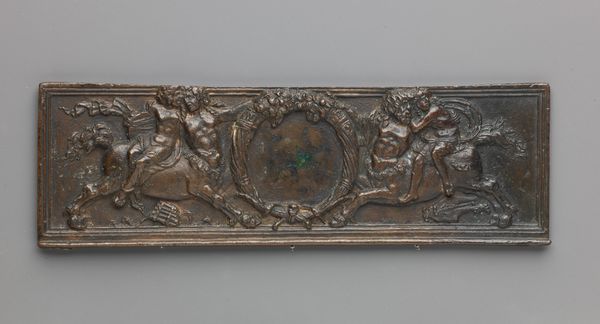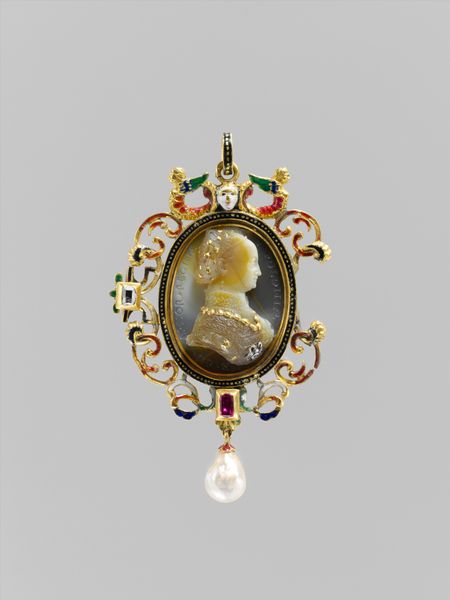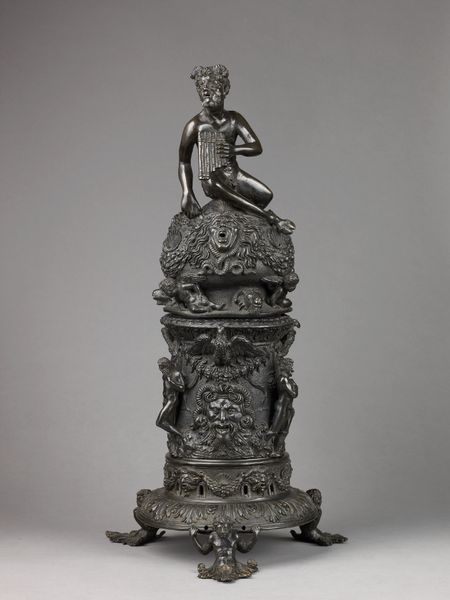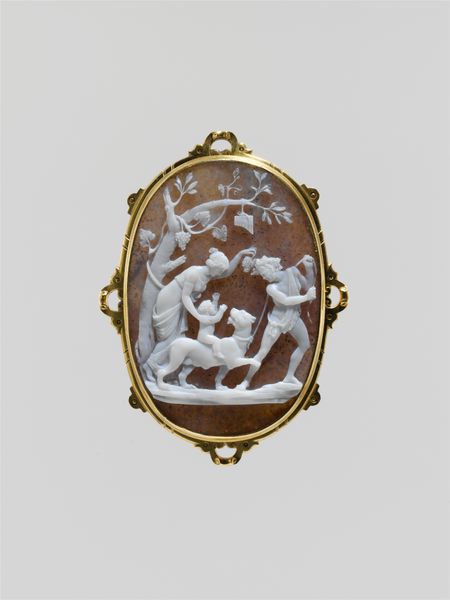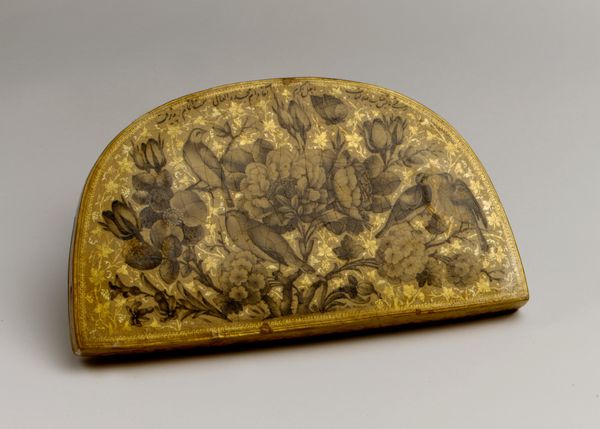
The Institution of the Rosary 16th century
0:00
0:00
metal, relief, sculpture
#
portrait
#
allegory
#
metal
#
stone
#
sculpture
#
relief
#
figuration
#
11_renaissance
#
sculpture
#
history-painting
#
decorative-art
#
italian-renaissance
#
virgin-mary
#
statue
Dimensions: 6 1/2 × 3 1/4 in. (16.5 × 8.3 cm)
Copyright: Public Domain
Curator: Here we have a beautiful metal relief sculpture called "The Institution of the Rosary," created in the 16th century by Jacopo Sansovino. You can find it at the Metropolitan Museum of Art. Editor: My first thought is one of incredible labor, it seems that a lot of time must have been dedicated to produce the sculpture. Curator: Indeed. The iconography is dense. The Virgin Mary, holding the Christ Child, sits enthroned while saints and perhaps donors receive rosaries from her. The Rosary itself is a potent symbol, connecting the earthly and divine realms through prayer and contemplation. Editor: The metalwork itself—what kind of metal are we thinking?—demands careful attention. You know, chasing, engraving. Who was the artist crafting this? What were their working conditions? Was it a commissioned piece dictated by wealthy patrons, reflecting power dynamics? Curator: Sansovino was, of course, a noted sculptor and architect of the Italian Renaissance. The precise method for making it might involved wax-casting methods, which may allowed multiples to be made in some size differences. The commission probably came from the circle of the wealthy Doge families in Venice or someone in contact with them. This would have added a significant layer of meaning and authority to its possession. The piece embodies notions of grace and divine blessing through its presentation of these symbols. Editor: Exactly. So, think about how the cost of the material and skill impacted it, in connection with the message. This wasn't just about piety; it was also about demonstrating financial capability and, implicitly, elevated social status through the acquisition and display of such a labor-intensive object. The Virgin here signifies not just maternal love but also the control that commissioner sought of the common population. Curator: I appreciate you highlighting that tension. These devotional images were undoubtedly meant to inspire, but the patronage undeniably intertwined the sacred with worldly power. Editor: And even the repetitive action implied by the rosary resonates. A sort of spiritual factory churning out absolution? I would argue the object’s value resides as much in those socio-economic considerations than in a vacuum of devotional belief. Curator: Interesting, so this lens shows me that the statue is also a perfect relic that holds multiple meanings according to the different viewers. Well, looking at its design once again with all our considerations of symbols, the use of metal, and historical context, "The Institution of the Rosary" presents new depth each time. Editor: Yes, analyzing both labor and symbolism grants the sculpture richer meaning beyond what's visible at first sight, unveiling social dynamics of the time.
Comments
No comments
Be the first to comment and join the conversation on the ultimate creative platform.
